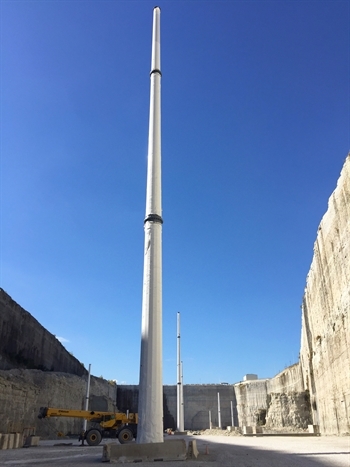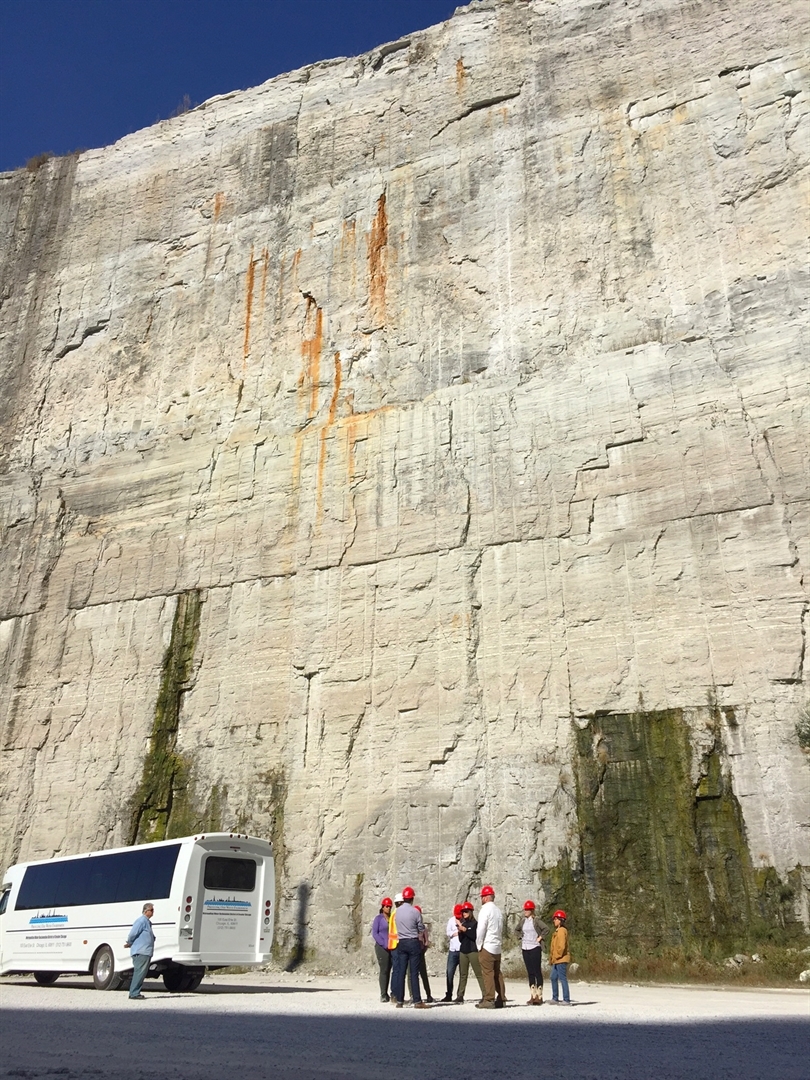Twenty miles southwest of the Loop and 285 feet below Lake Michigan, meet a new, 3.5 billion-gallon tank

The tunnel behind MPC staff is 33 feet in diameter, pumping 30,000 cubic feet/second of stormwater from communities.
 By Dan Moring, MPC Research Assistant
By Dan Moring, MPC Research Assistant - October 10, 2017
On a beautiful fall day a few weeks ago, staff at MPC took a field trip to the beach.
Well, not the beach of today, but the ancient shoreline of Lake Chicago, 20 miles southwest of the Loop and 285 feet below the water level of Lake Michigan. Here, after years of work, a major component of the region’s clean water future is nearing completion.

Kevin Fitzpatrick, Civil Engineer for MWRD, explains how the McCook Reservoir works
This is a photo from the bottom of the McCook Reservoir, where the unique geology of limestone deposits surrounded by rivers and atop a waterproof cap of shale makes it a cornerstone of the Tunnel and Reservoir Project (TARP). Led by the Metropolitan Water Reclamation District of Greater Chicago (MWRD), TARP is a system of deep tunnels and massive reservoirs (like McCook) that are designed to enhance pollution control and address urban flooding head-on.
To get to this point in McCook Phase 1, MWRD, and their partners at the U.S. Army Corps of Engineers, had to strip off 50 feet of topsoil—about 10 million cubic yards—before they could start mining out over 265 feet of limestone while simultaneously connecting the basin to tunnels stretching as far as Wilmette.

MPC
This giant hole is only the half-way point of drilling and stripping limestone at McCook Phase II, slated for 2029.
When Phase 1 comes online later this year, the McCook Reservoir will hold 3.5 billion gallons of combined sewage (stormwater—polluted runoff mixed with sewage) that would have otherwise gone straight into the region’s waterways. That’s enough to cover every square foot of the Loop[1] in nearly 10 feet of standing water.
Phase 2, scheduled to become operational in 2029, will nearly triple that volume for a total of 10 billion gallons of water storage capacity from McCook. Even with super-sized mining trucks moving 150 tons of rock at a time, Phase 2 will not be fully excavated until 2028.

MPC
Giant agitators will prevent stormwater from growing stagnant.
What took millennia to form and years to excavate will fill up in a matter of hours during a heavy rain, as 33-foot diameter pipes bring up to 30,000 cubic feet per second of stormwater from the surrounding communities.
This water will be stored and pumped back to the nearby Stickney Water Reclamation Plant at a rate of up to 430 million gallons per day (or 660 cubic feet per second), where it will be treated and released back into the waterways.
If the results from the Thornton Reservoir, servicing the Calumet River System, hold, the improvement in water quality should be rapid and dramatic once McCook is online. The project is anticipated to bring $143 million in annual benefits to the 3.1 million people living in the 37 surrounding communities.

MPC
Feeling dwarfed by our region's Grand Canyon, 285 feet below Lake Michigan.